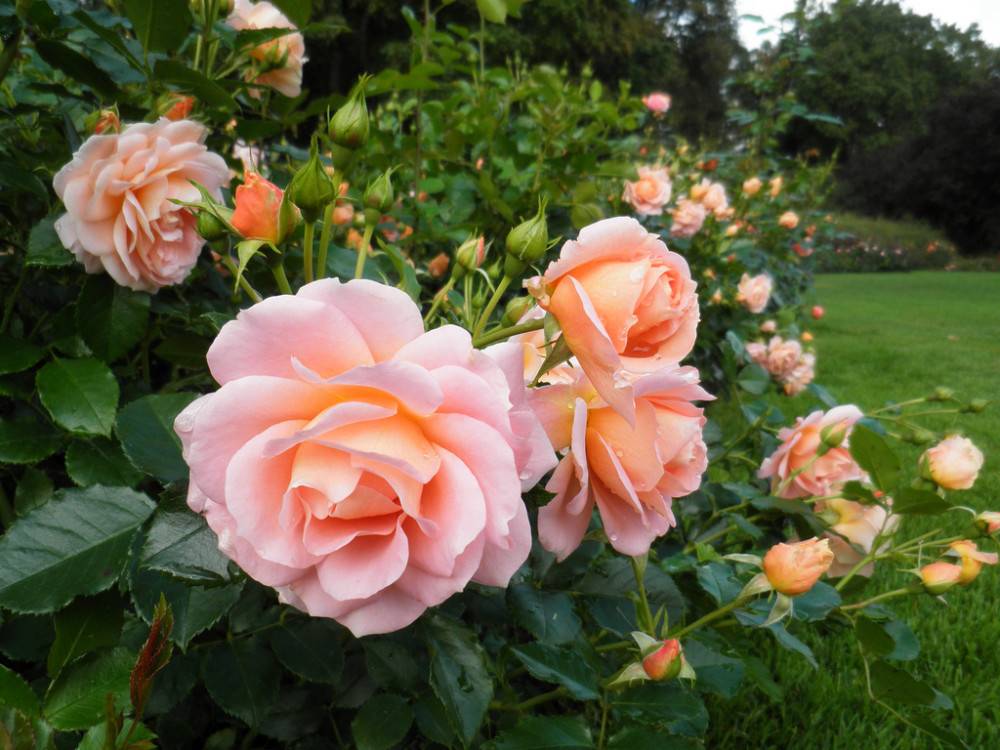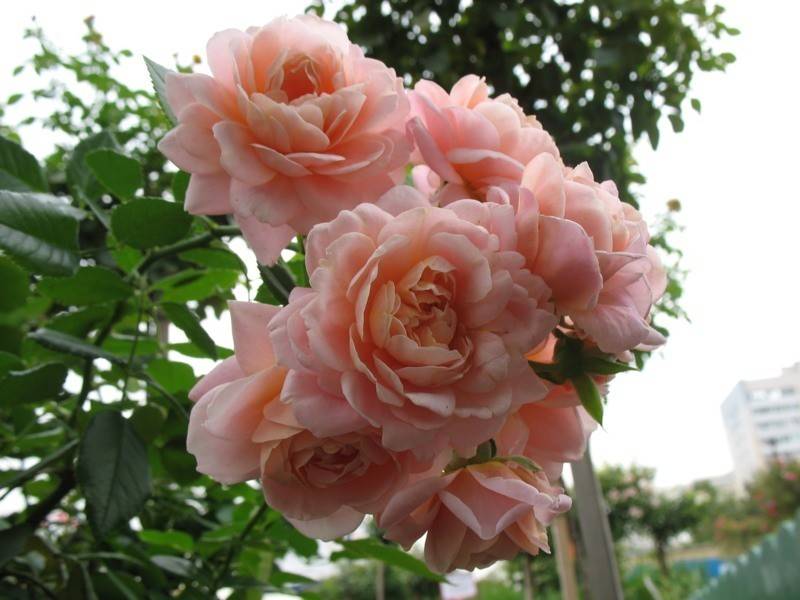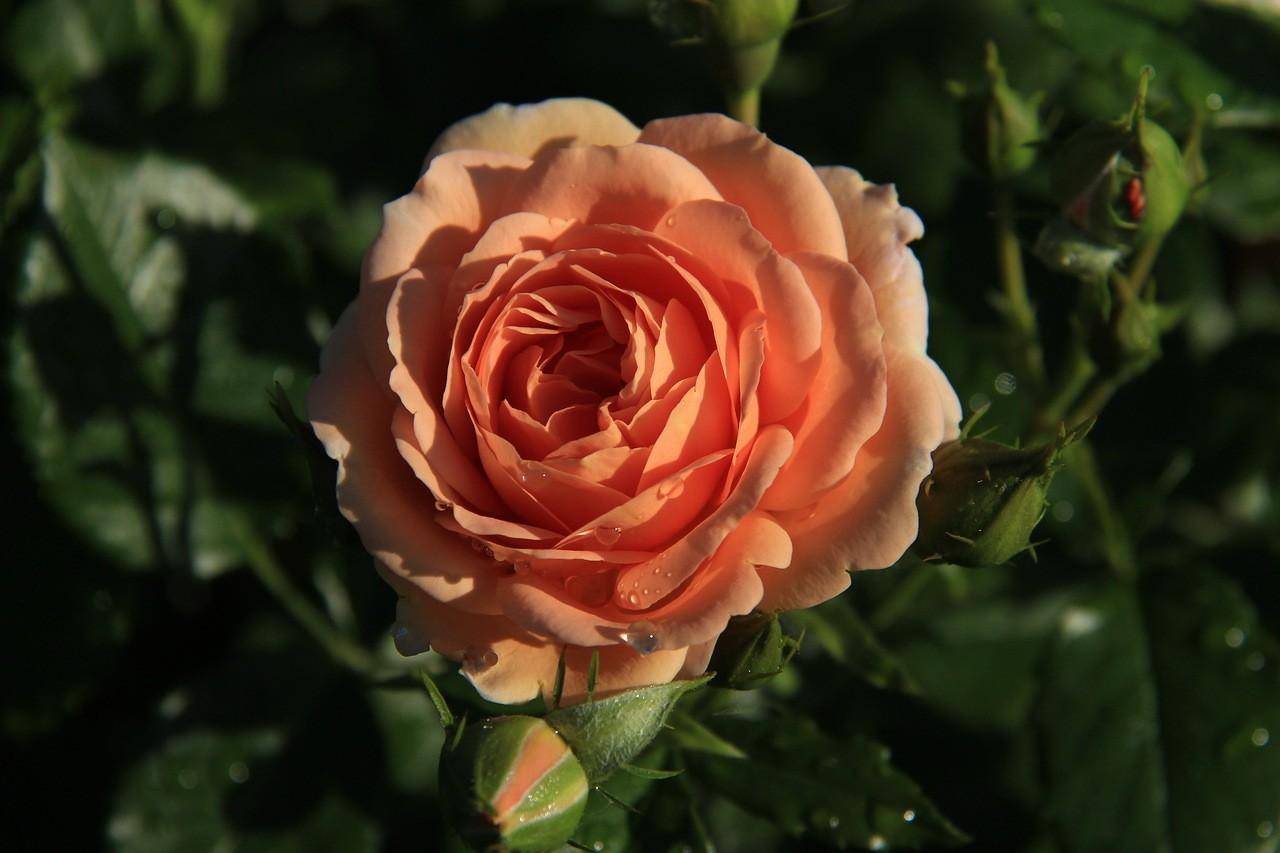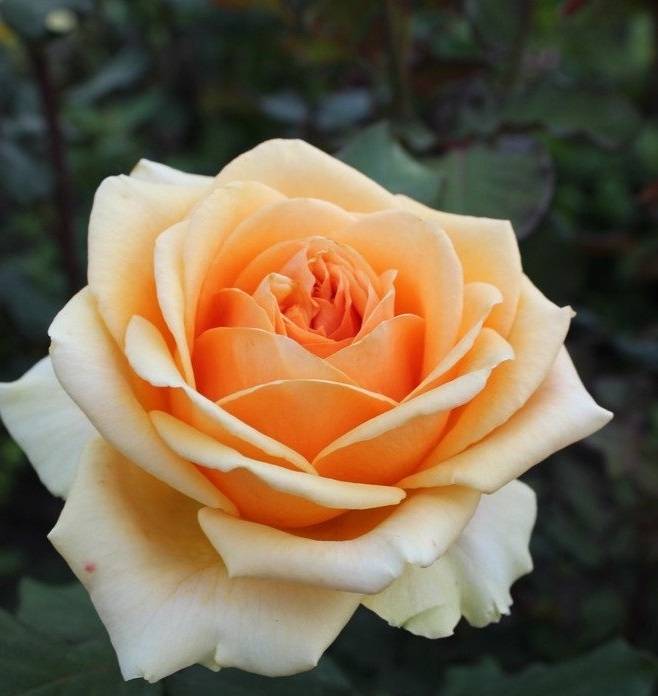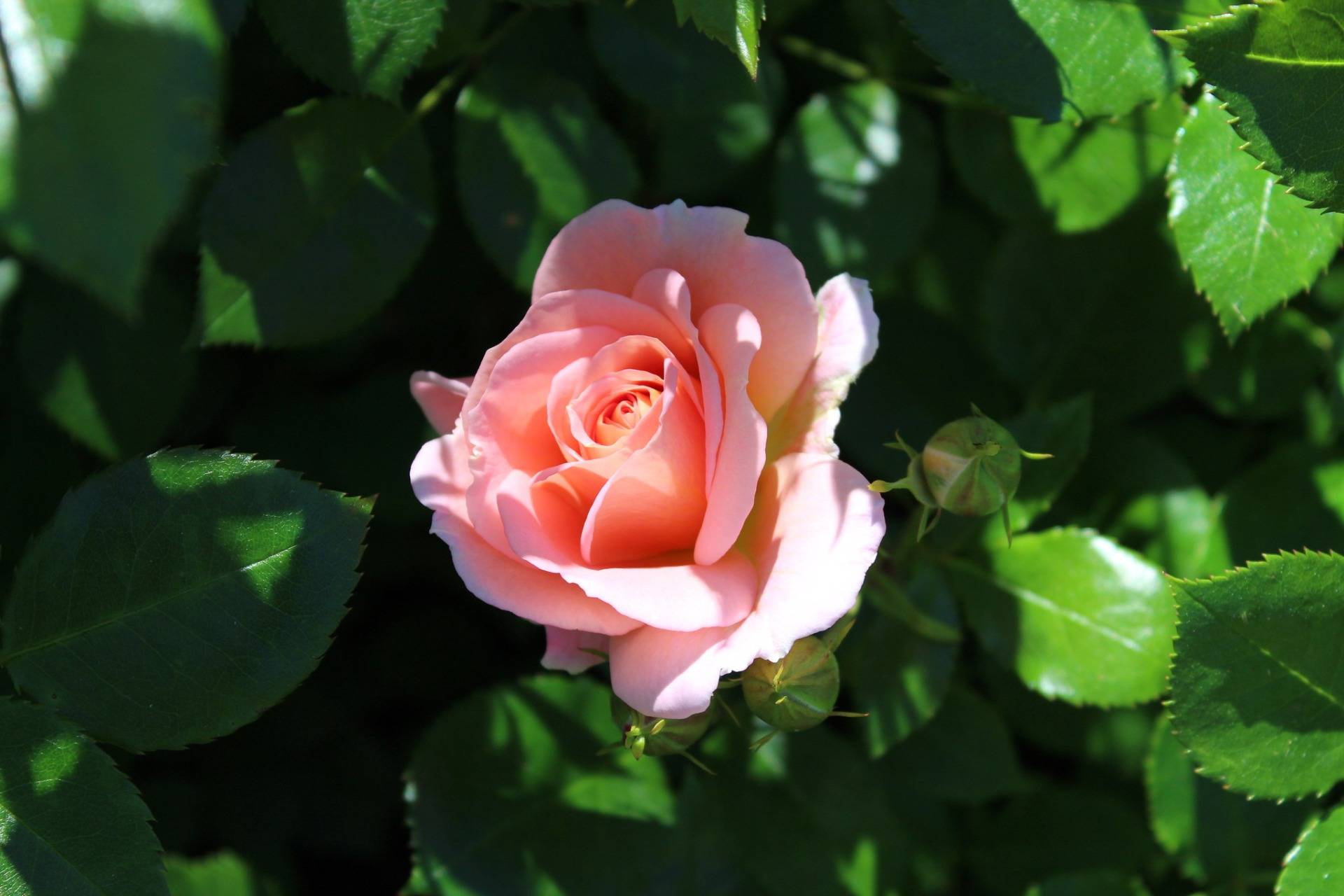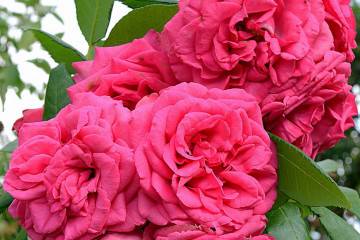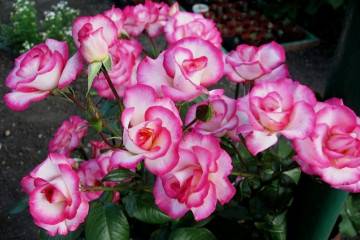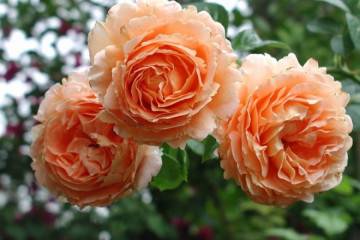Rose Geisha (Geisha) - features of cultivation
Content:
Delicate pink flowers of the Geisha hybrid tea rose will become an exquisite decoration of the garden plot, rockery, rose garden. A relatively unpretentious plant will delight you with a long, rapid flowering, and an intriguing name will attract an increased interest of neighbors-florists to the bushes. Modesty combined with aristocratic sophistication - this is how this variety can be characterized.
Short description
Rose floribunda Geisha was bred in 2005 in Germany by breeder Evers. Since the name "geisha" is given to several flowers, including roses, it is better to focus on the TANshei trade name, this will help to avoid mistakes when buying.
Distinctive characteristics of the bush:
- Height - 0.6-1 meter, with proper timely formation, overgrowth can be avoided.
- The leaves are deep green, the plates are decorated with sharp teeth at the edges.
- Terry flowers, up to 6 cm in diameter, collected in inflorescences of 6-7 pieces.
- The aroma is light, unobtrusive.
Pros and cons
The main advantages of the Geisha variety include:
- Long-term rapid flowering, during which the garden or rockery acquires a pale pink color, becoming a favorite vacation spot for true romantics. With good care, the rose can bloom in waves throughout the summer.
- Good frost resistance. It will not be affected if the thermometer drops below 22 degrees. If more severe winters are expected, shrubs are harbored in the fall.
- Drought survives well. However, if there is no rain for a long time, you should provide the plant with moderate irrigation.
- Reacts well to transplanting and pruning, recovers quickly enough and begins to bloom.
- Disease resistance.
The Geisha variety is not devoid of disadvantages. For example, he negatively perceives the neighborhood of weeds, so the soil should be weeded regularly. To reduce the amount of work, you can cover the soil with black film, pebbles, expanded clay.
For irrigation, it is allowed to use only soft water that has been previously settled for at least 48 hours, and even better - rainwater.
Use in landscape design
Rose Geisha is a shrub with improved decorative properties. It is used in a single planting, in complex compositions in combination with conifers, ferns. Geisha bushes look good next to water bodies: ponds, ditches, fountains.
It is important to consider the location of the plant relative to the reservoir, since the plant reacts very poorly to high humidity.
Growing features
Geisha rose is more commonly grown from green cuttings. Seed propagation is also acceptable, but gardeners do not practice it because of its laboriousness.
Timing
Rose planting is carried out in September, so that the plant has the opportunity to take root before the frost. New bushes are sure to be covered, even if the winters in the region are not harsh, and the average temperature is above -22 degrees.
Spring planting is also allowed, but in this case it will take one season longer to wait for flowering.
Location selection
Geisha hybrid tea rose is quite demanding in choosing a planting site. Primary requirements:
- Sunny area. However, for the prevention of burns, light partial shade is necessary.
- Good ventilation combined with protection from the north wind.
- Rich fertile soil.
- It is better to plant Geisha on a hill - the close occurrence to the surface of groundwater leads to damage to the roots.
Preparation of soil and seedlings
If the soil is clayey, not fertile enough, then it is enriched with peat or sand before planting. The required acidity level is 6.5-7.
To prepare the seedlings for planting, they are immersed in a growth stimulator. For disinfection, the lower edge is placed for 8 hours in a weak solution of potassium permanganate.
Step-by-step description of the process
The sequence of actions when planting a Geisha rose:
- Prepare a planting pit about 40 cm deep.If you plan to plant several bushes, then the distance between them is about 0.5 m.
- Place a seedling in the center of the hole. Spread the roots.
- Sprinkle with soil.
- Drizzle.
Plant care
The variety is generally unpretentious, but proper care will extend the life of the shrub and provide rich flowering.
Organization of watering
Geisha bushes react very negatively to excessive soil moisture, as well as to drying out. Watering should be carried out at least 1 time per week; by autumn, irrigation is reduced.
Water droplets should not be allowed to get on the foliage and buds, therefore, the bushes are watered under the root from a watering can with a thin spout.
Necessary feeding
Top dressing is carried out in two approaches. First in the spring, before the buds are set, then after the end of the first wave. Use complex fertilizers for flowering.
Pruning and replanting
The Geisha variety assumes regular pruning, it is permissible to leave about 1/3 of the shoots. The rest are cut, this will help renew the plant and extend its life. With abundant flowering, the bush is tied to a support to maintain stability.
The best time to transplant a Geisha is autumn, but it is important to have time to cover the displaced shrubs before the onset of cold weather.
Preparation for wintering
After pruning, the bushes are covered with foil, agrofibre, straw, hay.
After snow falls, it is also thrown on top as additional protection from frost.
Blooming rose
Buds are formed in waves. The first wave is considered the most abundant, during which the bushes are covered with inflorescences of amazing beauty. Burning out in the sun, the flowers gradually become apricot, which does not reduce the aesthetics of the plant.
Care during this period is simple:
- watering as needed;
- loosening the soil;
- weed removal.
Top dressing during the flowering period is not performed
Possible reasons for the lack of flowering
There are several main reasons:
- Sick or weakened seedlings. To avoid trouble, it is important to correctly approach the choice, to acquire only strong healthy seedlings with a well-developed root system. Rot traces are unacceptable.
- An error in choosing a landing site. Abundant shade is the reason for the lack of flowering. To solve the problem, the bushes are transplanted.
- Improper care. The plant reacts poorly to dryness, but waterloggedness is also harmful - it can cause death. It is necessary to adjust the irrigation and feeding regime.
It is necessary to remove faded buds in a timely manner, this stimulates flowering.
Reproduction nuances
Most often, Geisha roses are propagated by green cuttings. The best time is autumn, the first days of September. It will take about 20 days for rooting, after which you can prepare the plant for wintering.
Process description
Several branches are cut from the mother bush, from which the leaves are removed. The cuttings are planted in soil pre-enriched with compost and peat, watered abundantly and covered with a film or plastic bottle to create a greenhouse effect. Airing is carried out every day.
Diseases, pests and ways to control them
The Geisha variety is resistant to diseases and pests, but it needs preventive measures. If there are traces of fungal infections (dry yellowed leaves, spots, rot), then the bushes are treated with fungicides. The main pests:
- aphid;
- spider mite.
Insecticidal formulations will cope with them. Two treatments are carried out at intervals of a week.
Rose Geisha is a charming hybrid with double flowers of the most delicate color. It will become the highlight of any landscape composition.
